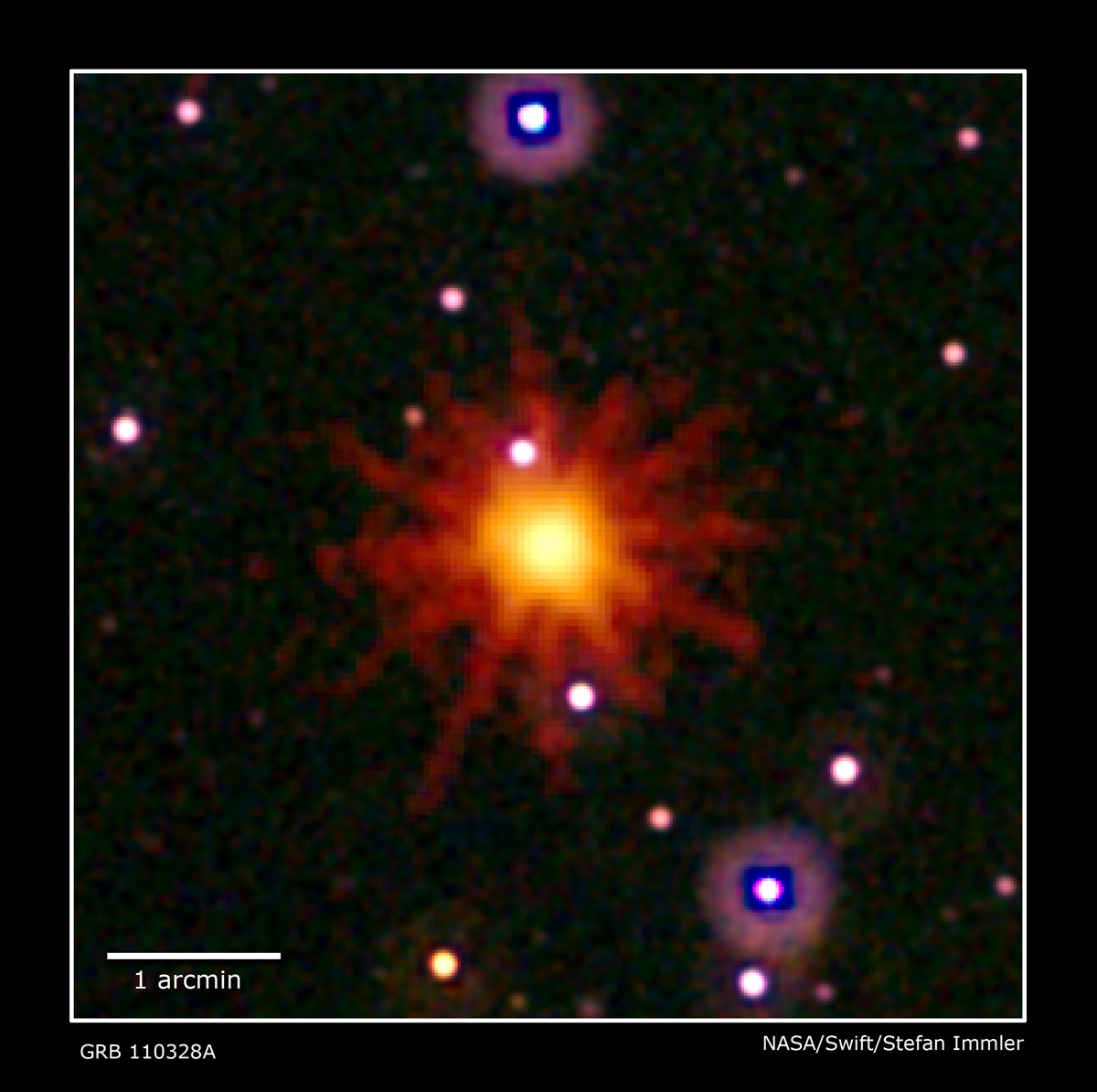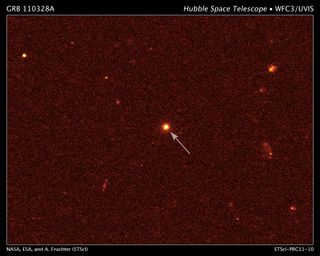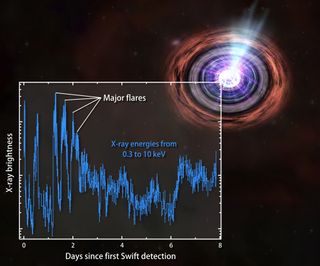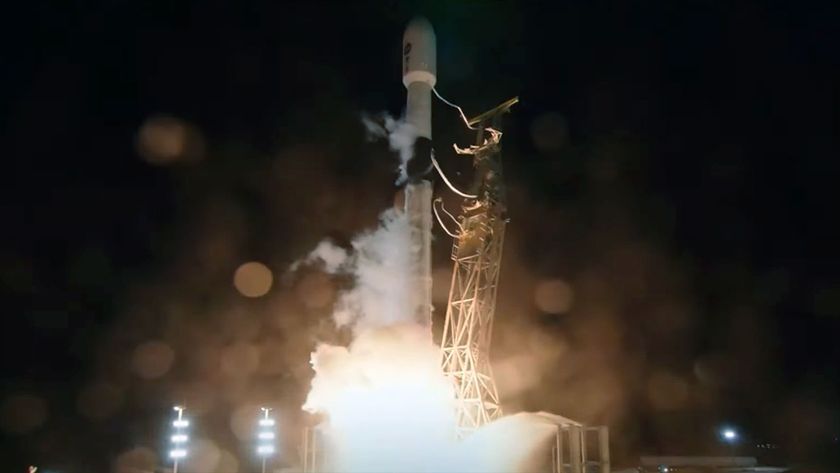Powerful Space Explosion May Herald Star's Death By Black Hole

A huge, powerful star explosion detonated in deep space last week — an ultra-bright conflagaration that has astronomers scratching their heads over exactly how it happened.
The explosion may be the death cry of a star as it was ripped apart by a black hole, scientists said. High-energy radiation continues to brighten and fade from the March 28 blast's location, about 3.8 billion light-years from Earth in the constellation Draco. [Image of the space explosion]
Astronomers say they've never witnessed an explosion so bright, long-lasting and variable before, according to NASA officials.
The explosion looks like a gamma-ray burst — the most powerful type of explosion in the universe, which usually mark the destruction of a massive star — but the flaring emissions from these dramatic events never last more than a few hours, researchers said.
"We know of objects in our own galaxy that can produce repeated bursts, but they are thousands to millions of times less powerful than the bursts we are seeing now," said Andrew Fruchter, of the Space Telescope Science Institute in Baltimore, in a statement today (April 7). "This is truly extraordinary."

Massive explosion in space
Scientists are using several NASA space observatories, working in concert, to study the massive blast.
Get the Space.com Newsletter
Breaking space news, the latest updates on rocket launches, skywatching events and more!
The space explosion was detected on March 28 when an instrument on NASA's Swift satellite detected an X-ray eruption, the first in a series of powerful blasts. The Swift observatory determined a rough position for the explosion, which scientists are now calling the gamma-ray burst (GRB) 110328A. [Video: What Makes the Brightest Flash in the Universe?]
After Swift's discovery, an image taken by the Hubble Space Telescope on Monday (April 4) pinpointed the exact source of the blast — the center of a small galaxy in the Draco constellation. That same day, astronomers used the Chandra X-ray Observatory to make a four-hour exposure of the puzzling source.
Although research is ongoing, astronomers say that the unusual explosion likely arose when a star wandered too close to its galaxy's central black hole. Intense tidal forces probably tore the star apart, and the infalling gas continues to stream toward the black hole.
According to this model, the spinning black hole formed an outflowing jet, which is blasting powerful X-rays and gamma rays in our direction, researchers said.
"The fact that the explosion occurred in the center of a galaxy tells us it is most likely associated with a massive black hole," said Neil Gehrels, the lead scientist for Swift at NASA's Goddard Space Flight Center, in a statement. "This solves a key question about the mysterious event." [Photos: Black Holes of the Universe]
Looking down the barrel of the jet
Most galaxies, including our own, contain central black holes with millions of times the mass of our sun. The disrupted star probably succumbed to a black hole less massive than the one at the heart of our Milky Way galaxy. The Milky Way's central black hole has a mass that is about 4 million times that of the sun, researchers said.

Astronomers have detected stars disrupted by supermassive black holes before, but none have shown the X-ray brightness and variability seen in GRB 110328A, which has flared repeatedly. Since April 3, for example, it has brightened by more than five times.
Scientists think that the X-rays may be coming from matter moving near the speed of light in a particle jet that forms as the star's gas falls toward the black hole.
"The best explanation at the moment is that we happen to be looking down the barrel of this jet," said Andrew Levan at the University of Warwick in the United Kingdom, who led the Chandra observations. "When we look straight down these jets, a brightness boost lets us view details we might otherwise miss."
Astronomers plan additional Hubble observations to see if the galaxy's core changes brightness.
Follow SPACE.com for the latest in space science and exploration news on Twitter @Spacedotcom and on Facebook.
Join our Space Forums to keep talking space on the latest missions, night sky and more! And if you have a news tip, correction or comment, let us know at: community@space.com.

Space.com is the premier source of space exploration, innovation and astronomy news, chronicling (and celebrating) humanity's ongoing expansion across the final frontier. Originally founded in 1999, Space.com is, and always has been, the passion of writers and editors who are space fans and also trained journalists. Our current news team consists of Editor-in-Chief Tariq Malik; Editor Hanneke Weitering, Senior Space Writer Mike Wall; Senior Writer Meghan Bartels; Senior Writer Chelsea Gohd, Senior Writer Tereza Pultarova and Staff Writer Alexander Cox, focusing on e-commerce. Senior Producer Steve Spaleta oversees our space videos, with Diana Whitcroft as our Social Media Editor.









